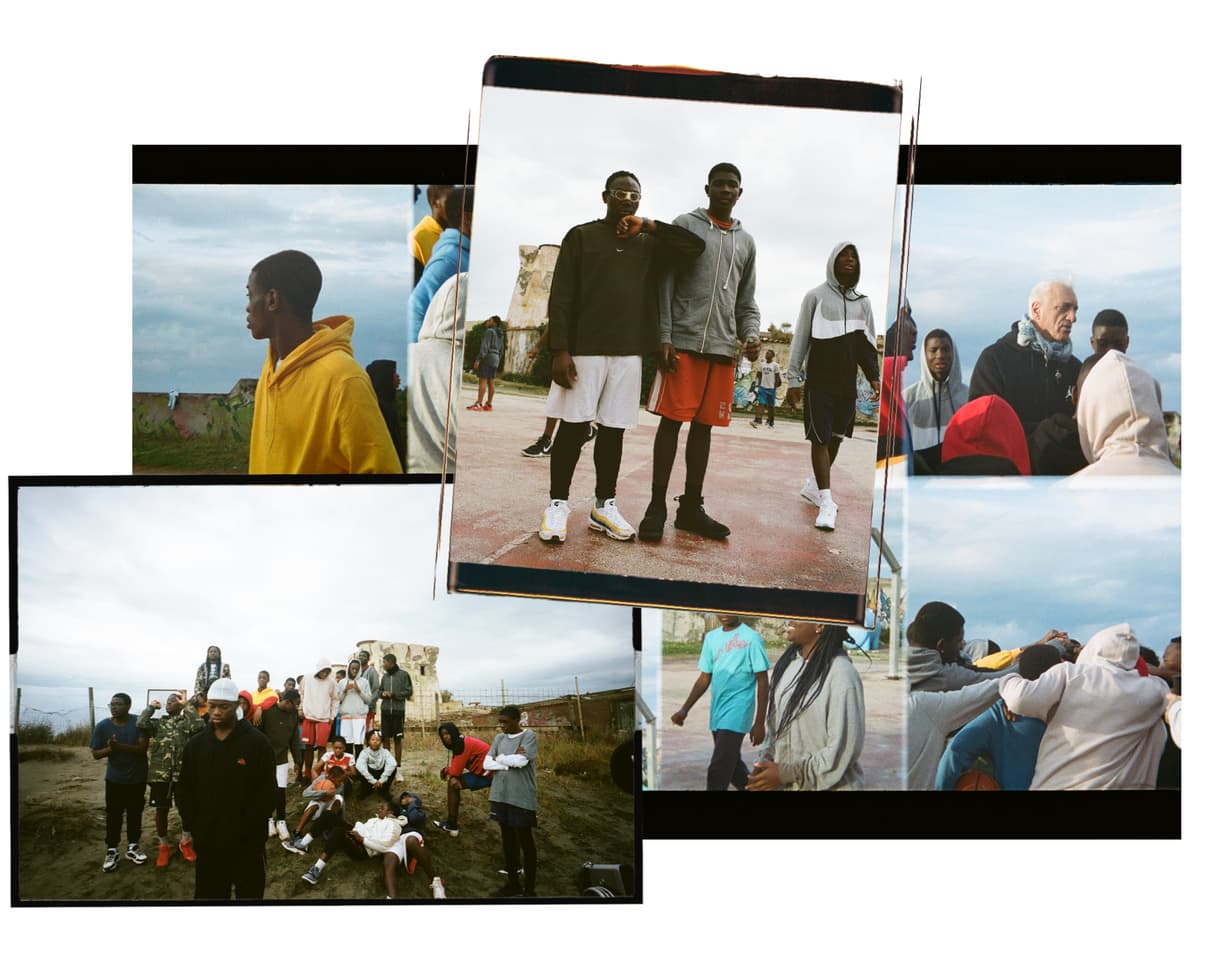A Hoops Academy for Migrant Children
Community
On the coast of Northern Italy, children from migrant families are finding community, and belonging, in basketball.
This story was reported in November, 2019.
This is a modal window.
The drive from Naples to the seaside town of Castel Volturno takes roughly forty minutes—thirty if you’ve got an Italian behind the wheel. But although the ride is short, this often forgotten region feels like a world away from the romantic grandeur of the nearby Amalfi coast.
In the 1960’s this neighborhood boomed with construction, its Villagio Coppola designed as a weekend destination for wealthy Neapolitans. But after an earthquake in 1980 and the discovery that the new residences had been built in violation of zoning laws, many were forced to leave and the area’s socioeconomic structures plummeted.

Here, amongst the abandoned buildings of a utopia in ruins, sits a basketball court. Its sunbaked surface slightly crumbling, its backboards patinaed and washed out. On the adjacent beach overlooking the sea, the view is breathtaking. Life is still, save for the cotton nets blowing in the breeze.

Suddenly, a commotion. Out of a nearby van explodes a group of kids, making their way towards the court. Members of the local Tam Tam Basketball Academy, they’ve made this court their home turf, rain or shine. In the years since the wealthy residents of Castel Volturno moved out, the area has experienced an influx of displaced migrants, many from Nigeria, who have taken refuge where they can find it—sometimes even in the dilapidated structures scattered across town. The volunteer nonprofit academy, created and coached by local resident Massimo Antonelli, aims to offer kids from the migrant community a positive structure and platform for growth and development. The court is also, simply, a beautiful place to hoop. “I like to play here where I can hear the sound of the waves,” says 12-year-old Cinzia Orobor “There’s a fresher air out here by the sea.”

For these kids, the court functions as a haven—a place to express who they are without words, without titles, without judgment. “Playing together, to face the challenges together, it’s a great thing,” says 15-year-old Destiny Lawal. “It brings us closer together.”

On the court, the kids stretch in a circle before moving into lay-up lines. It’s a boisterous affair, shrieks and laughs interrupted only by a coach’s whistle. After a series of passing, dribbling, and footwork drills are completed, it’s time to roll the ball out for full-court pick-up. Here, the mood changes, and an air of competitiveness grips the court. These kids go hard—play after play. Drenched in sweat and the spray of the sea, the games are fast-paced, and when a great move is made, play is temporarily paused as kids mob the court in celebration. The coaches, hands on their hips, smile and chuckle to themselves.

There is a certain pureness to the basketball played here, to seeing the great impact the game continues to have on young people, far from the United States, far from financial reward. “Basketball is like a family for me,” says thirteen-year-old Promise Kolawole, standing along the sideline. She pauses, perhaps to catch her breath, perhaps to let what she’s said sink in. Regardless, the pause lasts only a moment. In the blink of an eye, she’s gone, leaping back into the fray to chase the fast break downcourt. The game is on the line, and she wants to win—especially against family.
